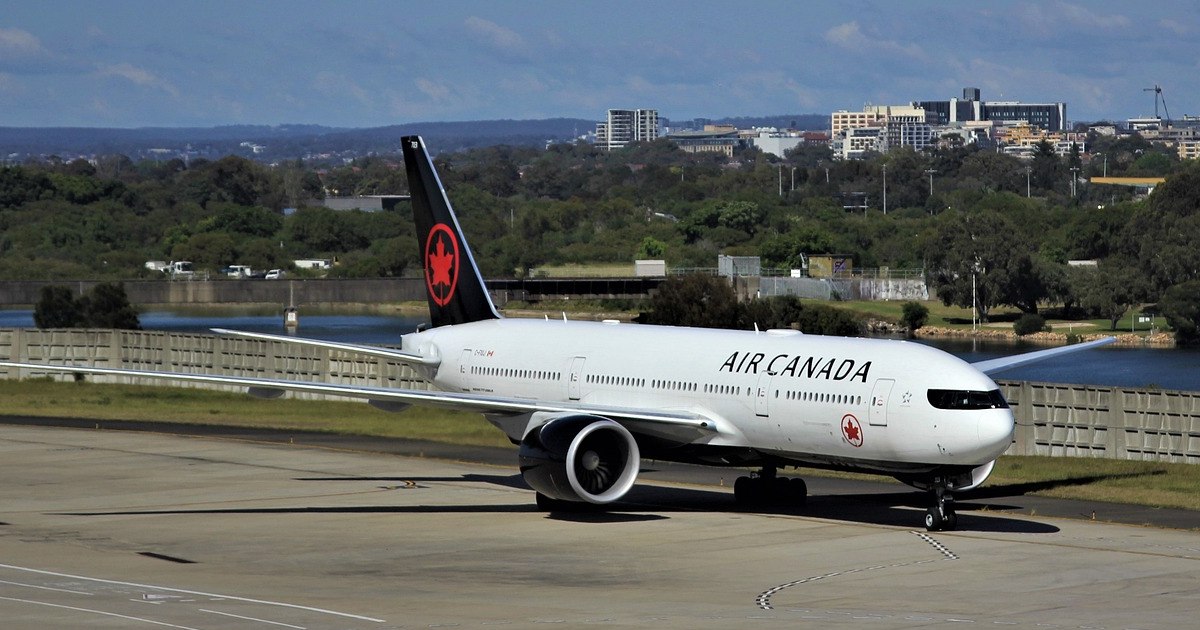Recent flight delays and cancellations with Air Canada
Click to view all recent flight delays and cancellation data for Air Canada. The table below gives you an inside view of how much information we have at our disposal.
Search
About Air Canada
Air Canada is Canada’s largest airline, the country’s flag carrier, and a founding member of Star Alliance, and provides direct service to six continents. It is the only international network carrier in North America to receive a Four-Star ranking from Skytrax. Air Canada is the country’s largest airline, transporting almost 35 million passengers a year. The airline travels to over 175 different airports in 5 continents. The company came into being in 1936 under the name Trans-Canada Airlines and started using Air Canada in 1954, though this was only for its French-speaking passengers; the name finally became universal in 1965. It uses four main hubs, which are Montreal-Pierre Elliott Trudeau serving 76 routes, Vancouver with 47 routes, Calgary which serves 33, and its largest, Toronto Pearson International Airport, which provides 153 routes. The new budget arm Air Canada Rouge is picking up a number of the airline’s sun routes such as Cuba, Havana José Martí International Airport (HAV), Mexico Benito Juárez International (MEX) and Haiti, Port-au-Prince (PAP), flying from Montreal; and Tampa International Airport (TPA), Barbados, Grantley Adams International (BGI) and Nassau (NAS).
At the forefront of innovation
Judged by its fleet size, Air Canada ranks as the world’s eighth-largest passenger airline company, operating over 1500 flights a day. Their planes include the Airbus A330, Boeing 767, 777, and 787, which are primarily used for intercontinental and long-haul journeys. The fleet’s Airbus A319, A320, and A321 are used on shorter routes, along with Embraer E170 & 90s. The group includes Air Canada Cargo, Express, and Rouge, along with Air Canada Vacations, which concentrates solely on the holiday market, flying to 90 tourist destinations. The airline has been keen to innovate during its history and was the first to introduce a universal smoking ban, was instrumental in the development of black box flight recorders, and was the first North American Airline to introduce electronic boarding passes.
Dreamliner delays
The delay in the arrival of Air Canada’s new Dreamliner aircraft is putting the airline under severe pressure to deliver promised improvements in levels of customer service. Along with the introduction of Air Canada Rouge, a budget division aimed at stemming losses to competition; the fuel-efficient Dreamliners are part of the company’s strategy to reduce financial losses. Instead, the late arrival of the planes is causing logistical problems and service issues where replacement aircraft with fewer facilities are being drafted in to cover. On top of the negative publicity generated by Rouge, this is resulting in a lot of frantic activity behind the scenes to mitigate any further bad press.
Airline faces recurring weather cancellations
The geographical location of its main hubs means that Air Canada can be seriously affected by adverse weather conditions. This is only to be expected as cold spells reaching -40 C and below can bring airports to a standstill. However, even considering these factors, the delay record for Air Canada flights leaves a lot to be desired. Taking the statistics for their 20 busiest routes during the two months, from mid-June to August, 75% of flights arrived on time, 9% were classed as late, 4% as very late, and almost a tenth, 8%, were excessively late, according to statistics by FlightStats. For a company hoping to avoid bad publicity, this is leaving a large number of unhappy passengers with the right to claim compensation for delays and cancellations.
At Flightright, we assist Air Canada passengers who have been subjected to a delay or flight cancellation to enforce their rights. Getting compensated is quick and simple. To get started, use our free online calculator to check your eligibility for an Air Canada flight delay compensation. For flight cancellations due to economic reasons, we see good chances to have a compensation claim, especially if you were informed by Air Canada not more than 14 days before your flight.
What are my rights when delayed with Air Canada?
- According to EU law up to €600 Compensation
- Regardless of the ticket price
- Flights up to 6 years old
- When the flight was delayed at least 3 hours, cancelled or overbooked
What should I do when delayed with Air Canada?
- Confirm the reason for the delay with the airline.
- Collect proof: photos, receipts of expenses, vouchers, etc.
- Insist on your basic benefits and services at the airport.
- Check your eligibility for compensation with our free online calculator
More in-depth information regarding the EU-regulation and your passenger rights.
Under what conditions is your flight delay with Air Canada eligible for compensation?
The 2004 EU261 regulation clearly defines a flight delay as when an airline or its replacement arrives at your destination more than 3 hours later than expected. In this circumstance, you need to check to know if you might be entitled to compensation.
Note: the amount of compensation is dependent on the distance of the flight – not on the amount you paid for your ticket. Additionally, the flight must either take off or land in the European Union. In the case where it is landing in the European Union, the airline must also have its headquarters in the EU.
An Air Canada passenger is entitled to compensation in the event of the following:
- Flight delay: If your Air Canada flight arrives at your destination more than 3 hours later than expected.
- Flight Cancellation: if you were not informed of the cancellation or informed less than 14 days before departure.
- Overbooking: If you had suffered a denied boarding due to overbooking of your flight.
- Missed connecting flight: If you missed a connecting flight due to a delay in one of the legs, and you arrived at your destination more than 3 hours later than expected.
Don’t take any excuses!
- Meal vouchers or accommodation (in the case of an overnight delay) do not suffice for compensation.
- All flight packages are covered by this regulation, and only the person on the passenger register who has suffered the delay, irrespective of who paid the ticket, will receive compensation for the inconvenience suffered.
- Your claims are valid up to 6 years in the past.
- Only extraordinary circumstances such as union strikes or bad weather relieve the airline of this responsibility.
Here is an overview of which compensation you’ll be entitled to, based on the circumstances of your delay:
- Short distance flight delays – Below 1500km – Passengers are due €250 compensation from Air Canada.
- Medium distance flight delays – Between 1500km and 3500km – Passengers are due €400 compensation from Air Canada.
- Long distance flight delays – Over 3500km – Passengers are due €600 compensation from Air Canada.
Delay, cancellation, overbooking or missed connection flight? You are entitled to:
| Short distance up to 1500 km | Medium distance up to 3500 km | Long distance from 3500 km |
| e.g. London – Edinburgh | e.g. London – Athens | e.g. London – Tokyo |
| 250€ | 400€ | 600€ |
How to claim compensation from Air Canada
The first thing to do is confirm that you are eligible for Air Canada flight delay compensation. This is often not a simple process when done on your own: getting access to flight databases, comparing your situation with other similar cases, checking whether your case applies under European Regulation No. 261/2004, etc. are some of the tasks that need to be done carefully to determine if you are eligible for an Air Canada compensation. In fact, for an individual without the legal expertise or the required technology, this can prove quite complicated.
But we have made it all easy with Flightright. In simple steps, you can determine your eligibility for an Air Canada delay compensation. Simply enter your flight details into our free compensation calculator, establish that you’re entitled to a claim against Air Canada, and then leave the rest to us. It will only take a few minutes for us to verify the eligibility of your claim and initiate action to ensure that you get compensated. Our service is free, as we only get a percentage of what we can extract as a claim. By choosing us, you are opting to join the more than 11 million satisfied customers who have used our service. We are a dependable partner, and we have been successful at asserting air passenger rights for over 12 years.
Get Started!
Air Canada Additional services at the airport
If your Air Canada flight departure is delayed for more than normal, you immediately have the right to basic benefits and services. These rights vary depending on the distance of your flight. Below, you’ll find an overview of what you’re eligible for:
- Short distance: from 2 hours waiting time – free drinks, free food, and 2 telephone calls, emails, or faxes
- Medium distance: from 3 hours waiting time – free drinks, free food, and 2 telephone calls, emails, or faxes
- Long-haul: from 4 hours waiting time – free drinks, free food, and 2 telephone calls, emails, or faxes
Delays of more than 5 hours
In this instance, you can, regardless of the distance, withdraw from your flight. Air Canada is obliged to either reimburse you or offer you alternative transportation to your destination.
Departure delayed until the next day
You’re eligible for a stay in a hotel, including transport to and from the airport. Contact Air Canada customer service directly and ask that confirmation of your hotel room and transfers to be provided in writing.
Your flight didn’t take off yet?
You can simply enter your flight details for your future flight, and we will let you know whether you’re eligible for compensation. Enter your flight here:
Air Canada – Summary of Operational Activities in 2023
| Airline Name | Total Number of Flights | Total Number of Cancelations | Total Number of Delays |
|---|---|---|---|
| Air Canada | 25,523 | 378 | 597 |
According to Flightright Data, in 2023, Air Canada operated a total of 25,523 flights. During this period, there were 378 cancellations and 597 delays.
Top 5 Major Airports Air Canada Operated at in 2023
| Airport Name | Total Number of Flights | Total Number of Cancelations | Total Number of Delays |
|---|---|---|---|
| Toronto (Pearson Int.) | 5,673 | 89 | 169 |
| Montreal (P. E. Trudeau Int.) | 3,919 | 41 | 83 |
| London (Heathrow) | 3,104 | 44 | 40 |
| Frankfurt | 2,118 | 42 | 44 |
| Paris (Charles de Gaulle) | 998 | 26 | 15 |
According to Flightright Data, in 2023, the major airports Air Canada operated at included Toronto (Pearson Int.), Montreal (P. E. Trudeau Int.), London (Heathrow), Frankfurt, and Paris (Charles de Gaulle). Toronto (Pearson Int.) had the highest number of flights at 5,673, with 89 cancellations and 169 delays.
Had flight problems with Air Canada?
Flightright takes care of your rights in the event of flight delays, cancellations, and overbooking and is committed to ensuring that you receive your compensation from the airline.
We will be happy to help you in case of flight problems with the airline for:
We have already been able to help with problems at the following airports, among others
We have already taken successful action against these and more airlines
Your flight did not go as planned?
In the event of flight delays, cancellations and overbooking, passengers may be entitled to compensation or ticket reimbursement. Flightright enforces your rights.

